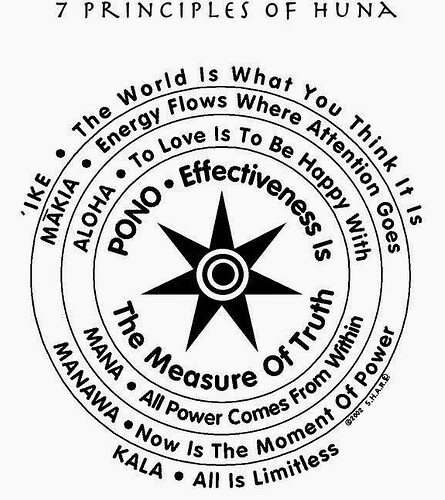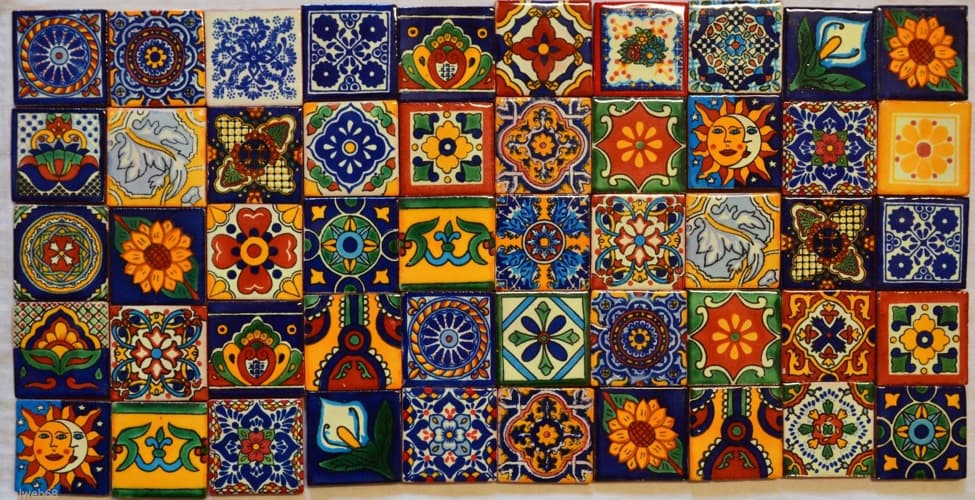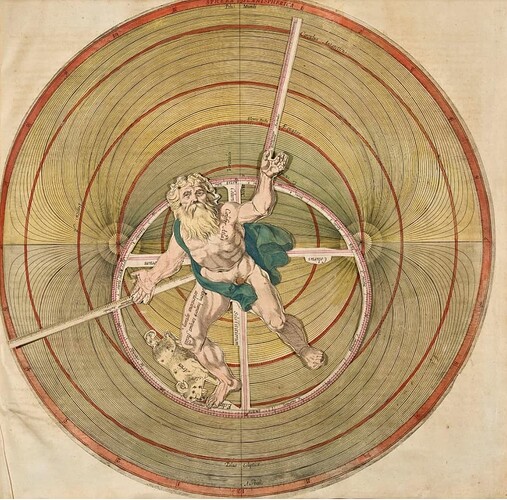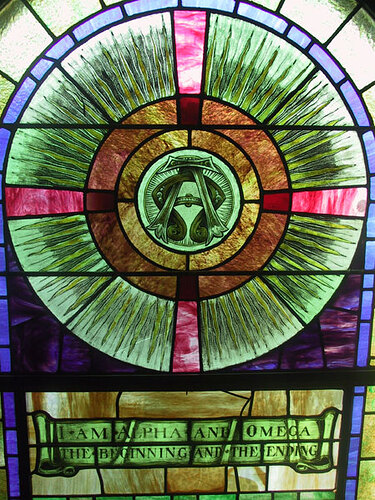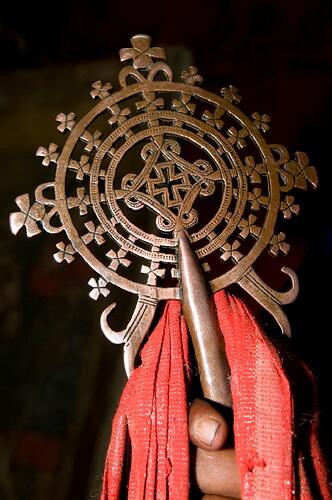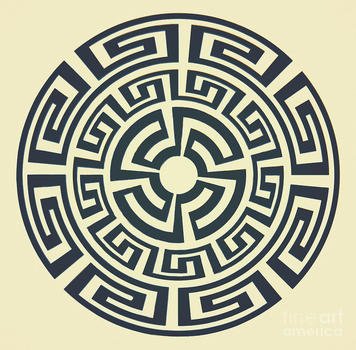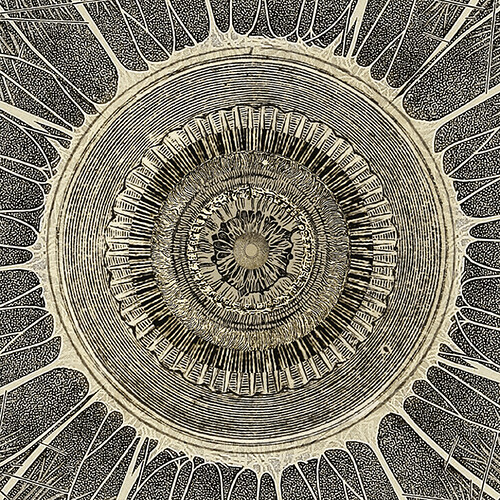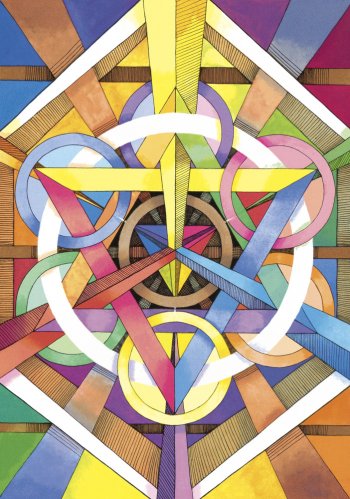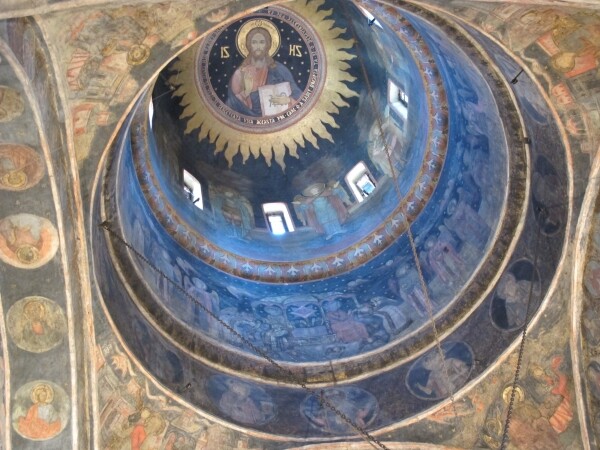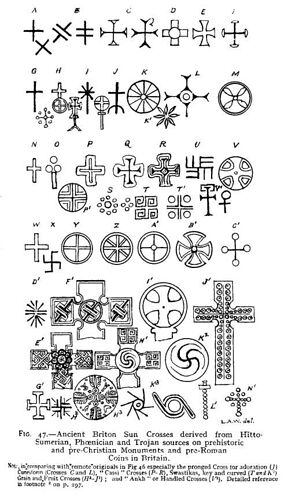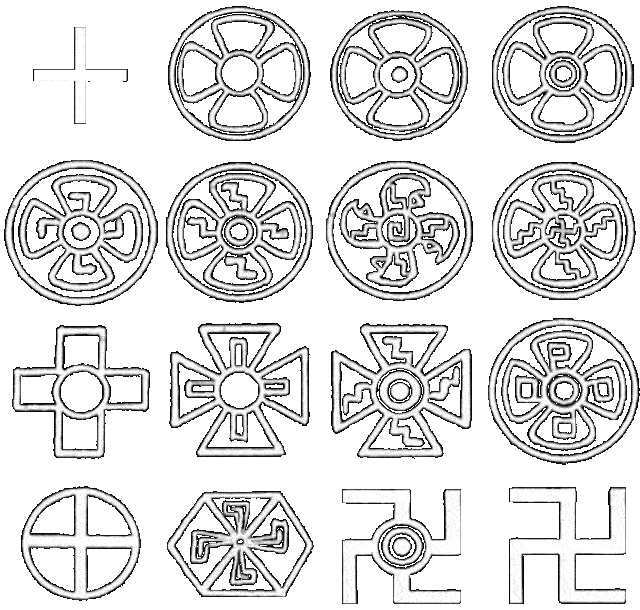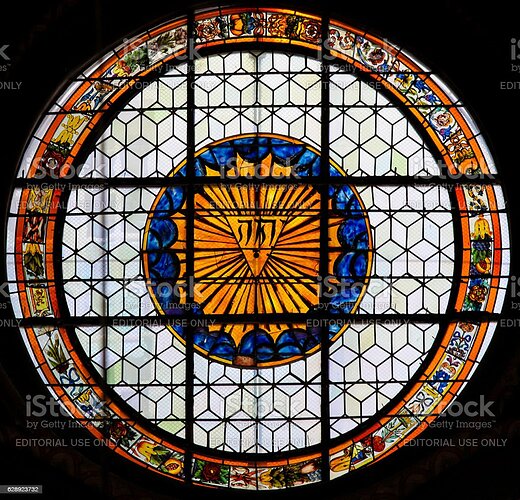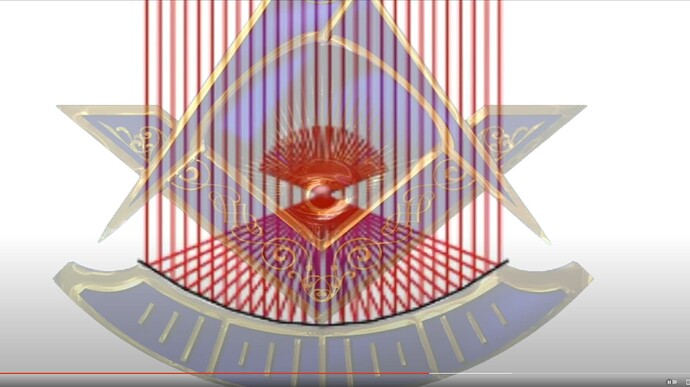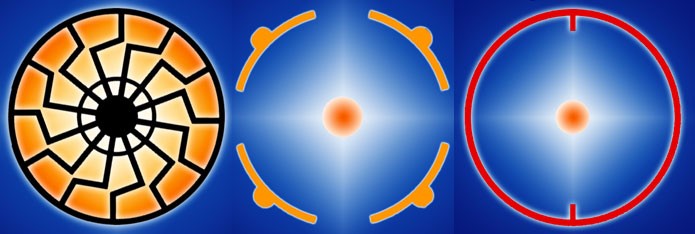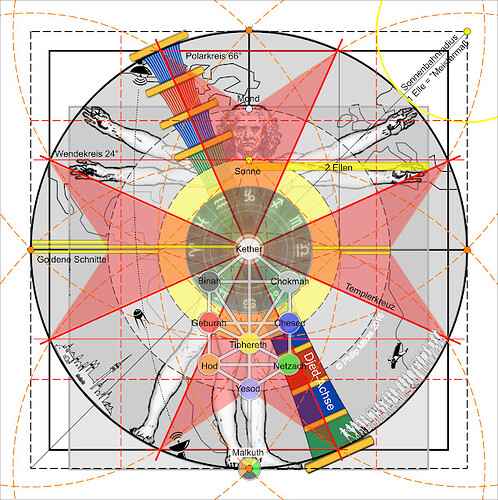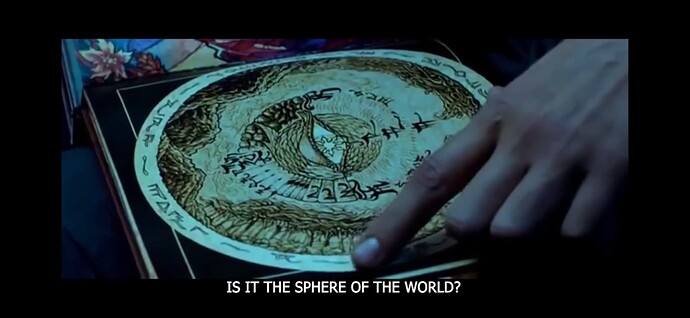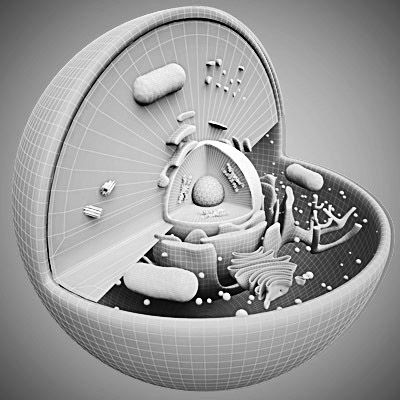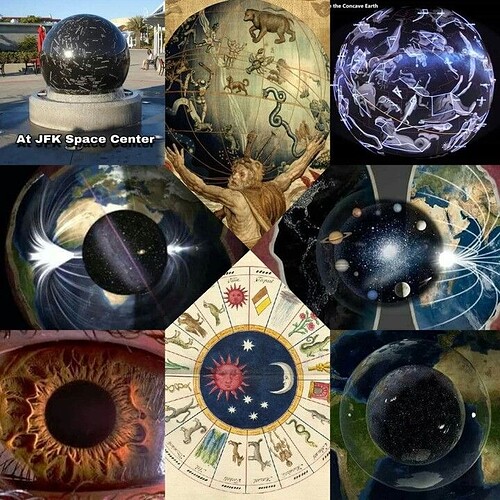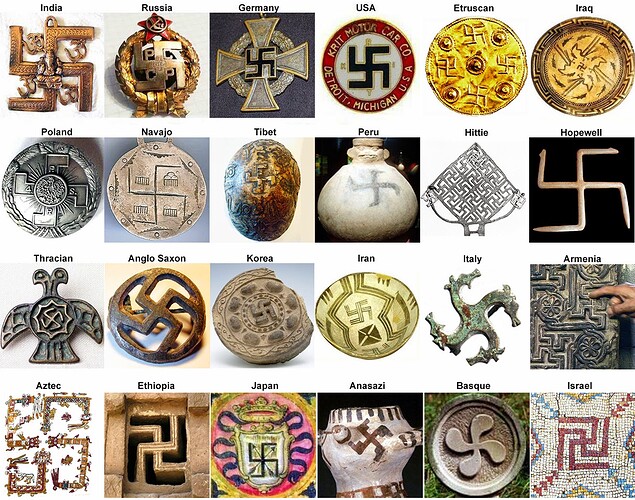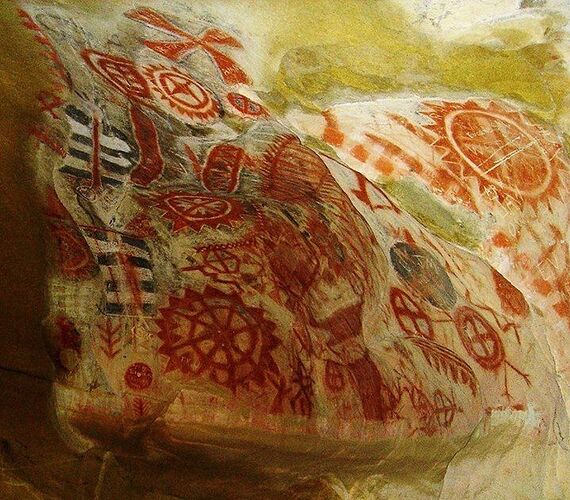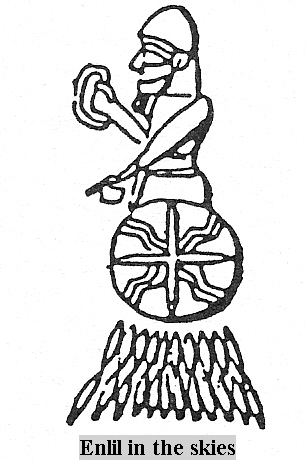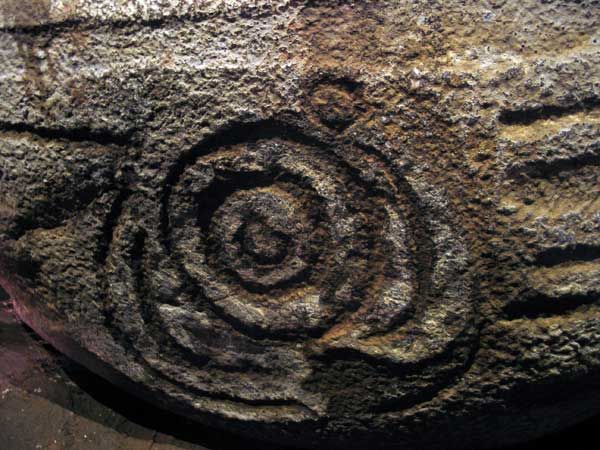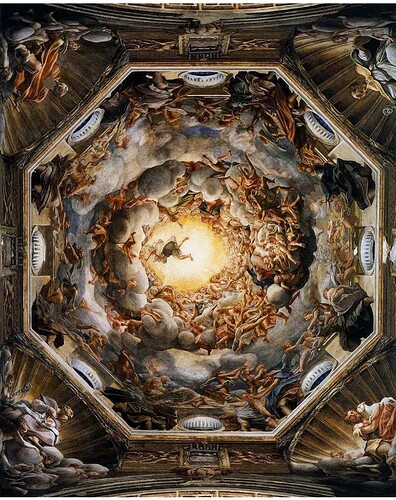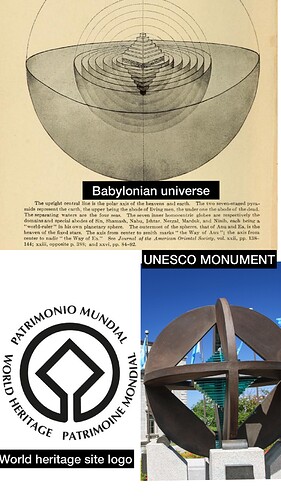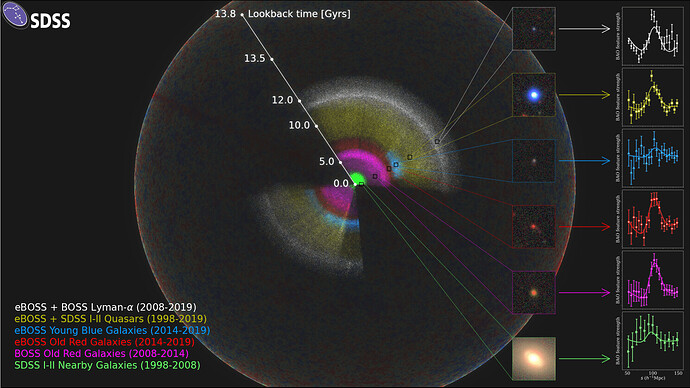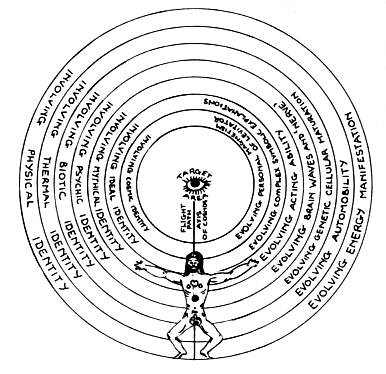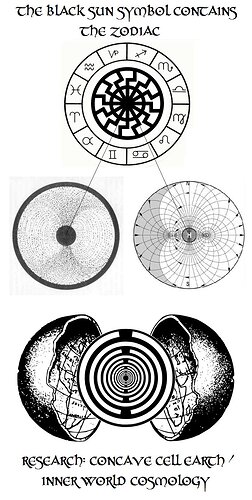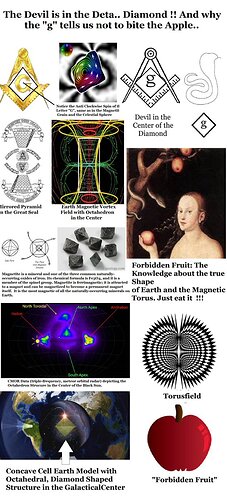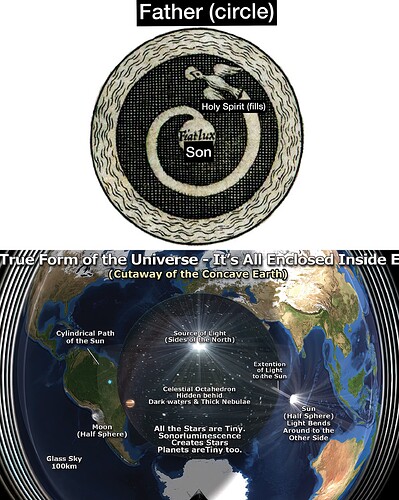The Spiritual Sun
Source https://www.wisdomportal.com/SpiritualSun/SpiritualSun.html
Insights from Sages
Peter Y. Chou
WisdomPortal.com
Preface: On August 4, 2007, while compiling philosophical texts and poetry relating to the number 56, I came across Rumi’s Discourses #56. Rumi’s remark that “the sun in the sky is metaphoric and secondary to the real sun” shocked me beyond belief. How could the sun that gives us light, warmth, and life, be unreal? What then is the Real Sun? I began my meditation on the sun during my walks and reading books of sages who have insights on this matter. Some of these ponderings inspired haikus gathered together in “Sun Haikus: 2007-2009”. On January 18, 2009, I began compiling “Notes on the Spiritual Sun”. On February 2, 2009, I began a poem “Hymn to the Sun” paying homage to our sun in the sky at the beginning, then citing what the Hindu sages define as reality, and ending with praise to the Real Sun, hoping readers will experience an Eureka moment like Archimedes when he discovered a way to assay real gold.
Paul Brunton: Sun Behind the Sun (Meditation on the Sun)
Thus he fixes his gaze upon the rising or setting sun or the coloured sky. All other thoughts should be put away at first and his whole attention concentrated upon the physical phenomenon which he is witnessing. The rays of light must enter his body through his eyes. In this way alone do they attain their utmost efficacy for the purpose of this exercise… In the second stage the student tries to partake of the profound inner pause wherein the entire solar system is so briefly plunged, to experience within himself what is actually occurring within the greater existence of which he is a part, to tranquillize all his thoughts so that personal matter are wholly absent. Just as the sun at dawn illumines the physical world, so the Sun behind the sun, the mystical Light of the World-Mind illumines man’s mental world at the same time, penetrates it through and through, provided he is present and passive in consciousness to receive its power. He must thoroughly steep himself in this wonderful mystical stillness wherein Nature is plunged for a few moments.
— Paul Brunton (1898-1981), Wisdom of the Overself (1943),
Ch. XIV, Yoga of the Discerning Mind: Sun Meditation,
Samuel Weiser, Inc., New York, 1970, pp. 230-231
Paul Brunton: Sun Behind the Sun
No animal, insect, fish, or bird has ever produced a metaphysical work or written a mystical poem or wondered about its own consciousness. Yet each possesses intelligence within its grade and each, from a bird like the crane to a creature like the chimpanzee, turns instinctively to the sun at certain times, showing its reverence, again within its grade. All of us acknowledge the physical sun as the original source of our physical life. If we humans are so much more advanced than our animal cohabitants of this planet that we alone can produce the three aforementioned things, we cannot all recognize that we owe our spiritual life— what there is of it— to the spiritual Sun, the ever-glorious Sun behind the sun, to our relationship with God.
A profound feeling of reverence for the Sun should be a part of the worship, the visible orb being regarded as the vesture worn by the Great Being behind it.
The Sun behind the sun, the mystical Light of the World-Mind illumines man’s mental world and at the same time penetrates it through and through, provided he is present and passive in consciousness to receive its power.
— Paul Brunton (1898-1981),
Notebooks, Volume 3: Practices for the Quest/Relax and Retreat (1986),
Ch. 6, Nature Appreciation (#78); Ch. 7: Sunset Contemplation (#4, #18);
Paul Brunton: Sun Behind the Sun (Vevey, Switzerland)
One day we were to travel from the small town of Vevey to the Cantonal center of Lausanne… We seated ourselves on the benches, and just rested in the welcome sunlight. Whenever such a moment would present itself in PB’s presence, I would always start to meditate, in hopes of partaking of his silence, and in natural response to the overwhelming radiance that flowed from him. This day was such a chance. As the Sun shone down upon us, it complemented the great light I felt shining forth from within PB. The silence deepened, thought slowed, and a great simplicity of light remained. Then the spell was broken— gently, actually, by the arrival of our train. PB rose from his bench, smiled, and remarked: “It is pleasant to sit in the sun.” Then he paused, and looked upon the world with those Eyes of Other and added “But it is better to sit in the Sun Behind the Sun.”
Later, Anthony pointed out the following passage from Manly Palmer Hall (Secret Teachings) Apuleius said when describing his initiation: At midnight I saw the sun shining with a splendid light. The midnight sun was also part of the mystery of alchemy. It symbolized the spirit in man shining through the darkness of his human organisms. It also referred to the spiritual sun in the solar system, which the mystic could see as well at midnight as at high noon, the material earth being powerless to obstruct the rays of this Divine orb. For a more thorough explanation, I suggest reading The Oration to the Sun by Emperor Julian.
— Tim Smith, “Recollection of PB”, The Goldenrod, September 2002, Number 55
Rumi: Physical Sun is Metaphoric for Real Sun
The sun casts light on things, and one can see things that are of no use. The real sun is that which casts light on things that are of use; the sun in the sky is metaphoric and secondary to the real sun. You too, in proportion to your own partial intellect, have your heart set on the real sun and seek its light of knowledge in order to see something intangible and in order for your knowledge to increase. You have expectations of understanding and comprehending something from every master and every friend. So we realize that the sun is something other than the physical sun: it is something from which revelation of realities and truths comes. We realize too that this partial knowledge in which you take refuge and pleasure is secondary to the great knowledge of which your partial knowledge is but a ‘ray’. This ‘ray’ calls you to the original sun of great knowledge. These are they who are called unto from a distant place.
— Rumi (1207-1273), Signs of the Unseen: The Discourses of Jalaluddin Rumi, Discourses #56
Dante: The Spiritual & Intelligible Sun
Where I say The Sun that circles all the world. Here we should know that just as it is appropriate to treat of things not perceptible by the senses by way of things that are perceptible, so it is appropriate to treat of things that are not intelligible by way of things that are intelligible. And so just as in the literal exposition we began by speaking of the material and perceptible Sun, so now we must begin by speaking of the spiritual and intelligible Sun, which is God. Nothing in the universe perceptible by the senses is more worthy to be made the symbol of God than the Sun, which illuminates with perceptible light first itself and then all the celestial and elemental bodies; therefore God illuminates with intellectual light first himself and then the celestial creatures and all other intelligent beings. The Sun with its heat gives life to all things, and if some are destroyed by it, this does not result from the intention of the cause but is, rather, an accidental effect. Likewise God gives life to all things in goodness.
— Dante Alighieri (1265-1321), Convivio, III.12
Emperor Julian: Sun is King of the Universe
It is, indeed, my opinion, that the sun (if we may credit the wise) is the common father of all mankind; for as it is very properly said, man and the sun generate man 1. But this deity disseminates souls into the earth not from himself alone, but from other divinities; and these evince by their lives the end of their propagation… But according to the opinion of the Phoenicians, who are skilled in divine science and wisdom, the universally-diffused splendor of light is the sincere energy of an intellect perfectly pure; and this doctrine will be found agreeable to reason, when we consider, that since light is incorporeal, its fountain cannot be body, but the sincere energy of intellect, illuminating in its proper habitation the middle region of the heavens: and from this exalted situation scattering its light, it fills all the celestial orbs with powerful vigor, and illuminates the universe with divine and incorruptible light… For the planets, indeed, dancing round him as their king, harmoniously revolve in a circle, with definite intervals, about his orb; producing certain stable energies, and advancing backwards and forwards: (terms by which the skilful in the spheric theory signify such like phenomena of the stars) to which we may add, as manifest to every one, that the light of the moon is augmented or diminished according to her distance from the sun… I earnestly entreat the sun, the king of the universe, that he will be propitious to me for my affection to his divinity; that he will impart to me a good life; more perfect wisdom; a divine intellect; and a gentle departure from the present state in a convenient time, that I may ascend to his divinity, and abide with him, if possible, in perpetual conjunction. But if this be a reward too great for my conduct on this terrene abode, may I at least be united with him for many, and long-extended periods of time.
— Emperor Julian (332-363 AD), Oration to the Sovereign Sun (1888 translation)
Marsilio Ficino: Orphic Comparison of the Sun to God
According to the Orphic tradition, the whole sphere of the Sun has a life-force far excelling that of al other spheres. It is this which causes life and movement to course through the entire body of the sphere and then to pour out through everything. But through the actual globe of the planet Sun it first bring about understanding and sight: it brings about understanding through the light of consciousness ruling in the very center of the Sun, as it were in the head; and it brings about sight through the visible light that shines everywhere withn the full circuit of the Sun, as it were in the eye. It is certainly in the Sun that visible light is created from the light of consciousness, and there also sight is created from understanding. For there understanding is no different from the same light of consciousness, nor sight from visible light itself. For the Sun, to be is to shine, to shine is to see, and to illuminate is to create all that is its own and to sustain what it has created. Of its very nature, by being it shines effortlessly within; just as effortlessly, by shining it illumines without, and by that illumination creates and sustains all that is its own.
Multiplicity is perceived by intelligence alone, that is, by the clear insight that discerns innumerable things and by the will that judges them. It is not, of course, by the intelligence of our eyes, which look up from here and see multiplicity in another realm, but by the intelligence of the light’s own eye, which observes and judges things there in itself. Thus those observations by which the causal forms of colors are individually distinguished are not occasioned by these colors or by these eyes but by the light itself, which is all-discerning and totally transparent; by the light itself, which imparts itself to the different kinds of color… But enough, my Lotterio, enough of fixing our gaze with such exertion, like the eagle, upon the celestial Sun… For this reason, even if we are not prepared to admit the Orphic Mystery as true, let us at least for now pretend that it is true, so that by looking up at the celestial Sun in this way we may descry in it, as in a mirror, that supercelestial One who has set His tabernacle in the Sun.
— Marsilio Ficino (1433-1499), Letter to Lotterio Neroni (Florence, 19 December 1479)
Meditations on the Soul: Selected Letters of Marsilio Ficino
Inner Traditions International, Rochester, VT, 1996, pp. 161-164 (Letter #75)
Marsilio Ficino: O Sun! Source of Justice!
O Sun! purging all men’s hearts with your flames, do you wish so very much to be inaccessible to any mortal when, in fact, you are of all things most accessible to everyone? O Sun! Source of Justice! Sun! Model of generosity! As urgently as you incite me to seek you out, so shine back on me; with just such brilliance, with just such healing. Have I, perhaps, dared to raise eyes that are too impure to the purest light? In this event, I confess, I have perhaps been Phaeton. Nevertheless, Phoebus, I have been and I am, yours, so cleanse me with your heat, I pray, and cherish me. As you can cast your rays through everything, Phoebus, so can you heal everything with your health-giving flames; for unlike Julian, the Platonist and former, but apostate Christian, I have not, being sunless, yet hymned the very sun himself.
— Marsilio Ficino (1433-1499), Letter to Lorenzo de’ Medici (14 April 1477)
Meditations on the Soul: Selected Letters of Marsilio Ficino
Inner Traditions International, Rochester, VT, 1996, p. 169 (Letter #79)
Plato: On the Sun
The sun, I presume you will say, not only furnishes to visibles the power of visibility, but it also provides for their generation and growth and nurture though it is not itself generation.
—Plato (427-347 B.C.), Republic, VI, 509b
And so, finally, I suppose, he would be able to look upon the sun itself and see its true nature, not by reflections in water or phantasms of it in an alien setting, but in and by itself in its own place. —Republic, VI, 509b
The sun, whose body can be seen by any man, but his soul by no man, any more than of any other creature’s body is to be seen, during life or at the time of death. We have every reason to believe that it infolds us in a fashion utterly imperceptible to all bodily senses, and is only to be discerned by the understanding. So here is a relevant consideration which we must apprehend by an act of pure understanding and thought. —Laws, X, 898e
Since soul guides the sun on his course… This soul, whether we take it to bring light to the world by driving the sun as its car, or from without, or in what way soever, each of us should esteem a god, should he not? —Laws, X, 898e, 899a
Plato: Sun as Metaphor for Illumination
Plato’s Republic (360 B.C.) uses the sun as a metaphor for the source of “illumination”, arguably intellectual illumination, which he held to be The Form of the Good, which is sometimes interpreted as Plato’s notion of God. The metaphor is about the nature of ultimate reality and how we come to know it. The eye, Plato says, is unusual among the sense organs in that it needs a medium, namely light, in order to operate. The strongest and best source of light is the sun; with it, we can discern objects clearly. Analogous things, he writes, can be said of intelligible objects (i.e., the fixed and eternal forms that are the ultimate objects of scientific and philosophical study).
Plato says the sun and the Good (“the object of knowledge”) are both sources of “generation”: “The sun … not only furnishes to visible the power of visibility but it also provides for their generation and growth and nurture though it is not itself generation. … In like manner, then … the objects of knowledge not only receive from the presence of the good their being known, but their very existence and essence is derived to them from it, though the good itself is not essence but still transcends essence in dignity and surpassing power.”
— Plato’s Metaphors (Plato's Metaphors)
Plato: Fire in Cave is Metaphor for Physical Sun
Socrates equates the cave to the visible world and the journey outisde of it represents the progression to the intelligible. The fire inside the cave, moreover, is equivalent to the actual sun, the source of light for our visible realm, and the metaphoric sun in the world outside the cave symbolizes the Form of the Good. — Plato’s Republic: A Reader’s Guide
Plotinus: Sun Citations in The Enneads
This is the only eye that sees the mighty Beauty. If the eye that adventures the vision be dimmed by vice, impure, or weak, unable in its cowardly blenching to look upon the uttermost brightness, then it sees nothing even though another point to what lies plain to sight. Never did eye see the sun unless it had first become sunlike, and never can the soul have vision of the First Beauty unless itself be beautiful. Therefore let each become godlike and beautiful who cares to see God and Beauty. The Primal Good and the Primal Beauty have one dwelling place, and thus, always, Beauty’s seat is There.
— Plotinus (204-270 A.D.), The Enneads. I.6.9
The Essence of Plotinus, Compiled by Grace H. Turnbull,
Oxford University Press, New York, 1948 (p. 50)
Existing beyond and above Being, It must be beyond and above Act, Mind, or Intellection. That only can be named the Good to which all is bound and Itself to none. It must be unmoved while all circles around It, as a circumference around a centre from which all the radii proceed. Another example would be the sun, central to the light which streams from it and is yet linked to it; try as you will to separate the sun from its light, for ever the light is connected with the sun.
— The Enneads. I.7.1 (p. 51)
The heavenly Aphrodite, daughter of pure Intelligence, must be the Soul at its divinest, unmingled as the immediate emanation of the Unmingled; remaining ever above, as neither desirous nor capable of descending to this sphere, a divine Being, having no part in matter. Any nature springing directly from pure Intelligence must itself be pure. Soul, then, could never fall from its sphere; it is closer held to Divine Mind than the very sun can hold the light which radiates from it, held firmly to it still. — The Enneads. III.5.2 (pp. 94-95)
As the sun’s rays illumine a lowering cloud and make it gleam all gold, so Soul entering the body of the heaven has given it life, has given it immortality and waked what lay supine. Moved now in endless motion by the Soul directing it, it has become a living and a blessed thing; Soul once domiciled within, it takes worth where before it was mere earth and water, the blankness of matter. By power of the Soul the manifold and diverse heavenly system is one whole; through Soul this universe is a god; and whatsoever we ourselves may be, it is all in virtue of Soul… You honor the Soul elsewhere, honor then yourself. — The Enneads. V.1.2 (p. 156)
How Divine Mind comes into being must be explained. It must be a circumradiation produced from the Supreme unaltering, as the brilliant light encircling the sun is ceaselessly generated from that unchanging substance… What then are we to think of the All-Perfect but that It can produce nothing less than the very greatest that is later than Itself? This must be Divine Mind, the loftiest being in the universe, Soul being an act and utterance of the One. — The Enneads. V.1.6 (p. 158)
In order to know what Divine Mind is you must observe Soul and especially its most God-like phase. One certain way to this knowledge is to separate yourself from your body and very earnestly to put aside the system of sense with desires and impulses and every such futility, all setting definitely towards the mortal; what is left is the phase of Soul which we have declared to be an image of the Divine Intellect, retaining some light from that Sun, just as the region about the sun, after the sphere of the sun itself, is radiant with solar light. A light springing from Divine Mind and shining about It, Soul depends closely on that Source… The One is, in truth, beyond all statement; whatever you say would limit It; the All-Transcending, transcending even the most august Mind, which alone of all things has true being, has no name.
— The Enneads. V.3.9,13 (pp. 161-162)
And each of them contains all within itself and sees all in every other, so that everywhere there is all, and each is all, and infinite the glory! Each of them is great: the small is great; the sun There is all the stars; and every star, again, is all the stars and sun; each is mirrored in every other. Perfect rest There; and the Beauty is all beauty… The true Wisdom, then, is Real Being, and Real Being is Wisdom; it is Wisdom that gives value to Real Being and Being is real in virtue of its origin in Wisdom. — The Enneads. V.8.4,5 (pp. 173-174)
When Divine Mind looks towards the Good we must think of It not as looking but as living; dependent upon That, It keeps Itself turned Thither; there is no longer bare act, there is a filling to saturation… In this way the Supreme may be understood to be the cause at once of essential reality and of the knowing of reality. The sun, cause of the existence of sense-things and of their being seen, is indirectly the cause of sight, without being either the faculty or the object; similarly this Principle, the Good, cause of Being and Divine Mind, is a light appropriate to what is to be seen There and to their seer.
Thus arising, Divine Mind is manifested as this universe of Being. As the First is a light to It, so It becomes a light to Soul which It shapes into Reasoning Soul by communicating a trace of what Itself possesses. — The Enneads. VI.7.16,17 (p. 197)
The Inner Sun: Sol & Solar Plexus In the Human Body
The alchemists conceived of Sol as a concrete substance and we can understand they’re talking about a substance of the psyche. Sol was thought of as the central celestial fire; it’s the fructifying source of heat and ight and the root of life drive. Sol is thought of as the central source and, appropriately, its alchemical symbol is a circle with a dot in the center. The same symbol is used for gold because they are thought to be of the same substance. Gold is the terrestial sun-stuff spun into the bowels of the earth by Sol’s endless revolutions around the earth. In man, Sol represents the central source of divine fire. Jung says that according to Dorn, “Just as the physical sun lightens and warms the universe, so, in the human body, there is in the heart a sunlike arcanum from which life and warmth stream forth.” I think that image must have been at the back of the minds of the early anatomists when they named a major complex of autonomic nerve ganglia in the epigastric region, the solar plexus. When we are exposed to intense affect, that solar plexus glows inside; you can feel the heat of it— that’s the inner sun.
— Edward F. Edinger, The Mysterium Lectures, Inner City Books, Toronto, 1995, p. 87
Alchemy: The Sun & its Shadow Complete the Work
.jpg)
Emblema XLV:
The Sun & its shadow complete the work.
Epigramma XLV:
The Sun, the bright torch of Heaven does not penetrate dense bodies,
That is why there remains shadow on the parts turned away from it;
Although the shadow is the most insignificant of all things,
It has been of much use to the Astronomers:
But Sol & its shadow gives more gifts to the Philosophers
Because it means the completion of the art of making gold.
— Michael Maier (1568-1622):
Atalanta Fugiens (1617)
Emblema XLV: The Sun & Its Shadow
Illustration from Gardening: Maitreya 3,
Shambala, Berkeley, 1972, p. 97
The sun and its shadow: In the midst of the symbolism of Sol, we learn that not only is it associated to the Deity and the creative source of fire and life, but it also has many parallels with hell and the devil. We learn that there is a Sol niger, a black sun; there are not only bright sun rays but also dark sun rays. Thus one of the alchemical texts says that you must extract the sun ray from its shadow… Jung ends his section on Sol, saying that Sol is the principle of consciousness. Since the ego is the center of consciousness, that makes Sol the ego… So the sun as the symbol of consciousness represents both the ego and the Self. The reason for that double representation is that the Self cannot come into conscious, effective existence except through the agency of an ego. Needless to say it can come into plenty of effective existence without an ego but it can’t come into consciously effective existence without the agency of an ego. That’s why it is unavoidable that the symbolism of Sol, as the principle of consciousness, represents both the ego and the Self.
— Edward F. Edinger, The Mysterium Lectures, Inner City Books, Toronto, 1995, pp. 87, 93-94
Alchemy: Fludd on the Sublime Sun
.jpg)
“The sublimity and perfection of the macrocosmic sun is clearly revealed when royal Pheobus sits at the very centre of the sky in his triumphant chariot, his golden hair fluttering. He is the only visible ruler, holding in his hands the royal sceptre and governing the whole world.”
(Fludd, Mosaicall Philosophy, London, 1659)
— Robert Fludd (1574-1637), Utriusque Cosmi, Vol. 1,
Oppenheim (1617). From Alexander Roob,
Alchemy & Mysticism, Taschen, Köln, 1997, p. 61
Alchemy: Fludd on Sun as the Cosmic Soul
.jpg) For Robert Fludd the sun is the heart of the macrocosm. It is at the precise point of intersection of the two pyramids of light and darkness, in the ‘sphere of equilibrium’ of form and matter. Within it dwells the life-giving cosmic soul.
For Robert Fludd the sun is the heart of the macrocosm. It is at the precise point of intersection of the two pyramids of light and darkness, in the ‘sphere of equilibrium’ of form and matter. Within it dwells the life-giving cosmic soul.
"I confess before my God that I could say so much about the possible uses of these two pyramids that I could easily fill a huge volume. (Fludd, Philosophical Key (1619)
The upper third is the region of the divine fiery heaven (Empyrean), the lower of the elemental heaven. The central sphere, which consists of equal parts of upper light and lower matter. Fludd assigned to the ether, the “fiery air”. The path of the sun runs straight through the intersections, “which Platonists therefore referred to as the sphere of the soul (sol).”
— Robert Fludd (1574-1637), Utriusque Cosmi, Vol. 1,
Oppenheim (1617). From Alexander Roob,
Alchemy & Mysticism, Taschen, Köln, 1997, pp. 56, 273
Fludd: The Sun Breathing Life into the Cosmos
.jpg) In the Renaissance, the translations by Marsilio Ficino (1433-1499) of the Corpus Hermeticum revived the cult of the sun based on the ancient Egyptian mysteries. For Ficino, the sun embodied, in descending order, God, divine light, spiritual enlightenment, and physical warmth. In this illustration, Fludd shows God placing his tabernacle in the sun at the beginning of creation, and thus illuminating and breathing life into the entire cosmos.
In the Renaissance, the translations by Marsilio Ficino (1433-1499) of the Corpus Hermeticum revived the cult of the sun based on the ancient Egyptian mysteries. For Ficino, the sun embodied, in descending order, God, divine light, spiritual enlightenment, and physical warmth. In this illustration, Fludd shows God placing his tabernacle in the sun at the beginning of creation, and thus illuminating and breathing life into the entire cosmos.
— Robert Fludd (1574-1637), Philosphia sacra
Frankfurt (1626). From Alexander Roob,
Alchemy & Mysticism, Taschen, Köln, 1997, p. 60
Scientifically, we may look at the tabernacle as the Periodic Table of Elements. Since the sun is mostly Hydrogen, the first element with atomic number of 1, it forms the second element Helium, then Lithium, Beryllium, Boron, Carbon, Nitrogen, Oxygen, onto Uranium— all the elements making up the planets, stars and galaxies of this universe.
Apuleius and the Midnight Sun
Listen then, but believe; for what I tell you is the truth. I came to the boundary of death and after treading Proserpine’s threshold and before returning I journeyed through all the elements. At midnight, I saw the sun shining with brilliant light. I approached the gods below and the gods above face to face and worshipped them in their actual presence. Now I have told you what, though you have heard it, you cannot know. So all that can without sin be revealed to the understanding of the uninitiated, that and no more I shall relate.
— Lucius Apuleius (123-180 A.D.), The Golden Ass, Book 11.23
translated by E.J. Kenney, Penguin Books, London, 1998, p. 209 (E-text, Ch. 48).
Midnight Sun at Arctic Circle
.jpg) Painting by Cory Ench, Midnight Sun (2004).
Painting by Cory Ench, Midnight Sun (2004).
The midnight sun is a phenomenon occurring in latitudes north and nearby to the south of the Arctic Circle, and south and nearby to the north of the Antarctic Circle where the sun remains visible at the local midnight. Given fair weather, the sun is visible for a continuous 24 hours, mostly north of the Arctic Circle and south of the Antarctic Circle. The number of days per year with potential midnight sun increases the further poleward one goes. In Svalbard, Norway, the northernmost inhabited region of Europe, there is no sunset from approximately 19 April to 23 August. The extreme sites are the poles where the sun can be continuously visible for a half year. The opposite phenomenon, polar night, occurs in winter when the sun stays below the horizon throughout the day.
Alchemy: Splendor Solis
.jpg) Emblema 1: A coat of arms with ornate foliage, has a shield bearing the image of the Sun. Above this another Sun shines down.
Emblema 1: A coat of arms with ornate foliage, has a shield bearing the image of the Sun. Above this another Sun shines down.
Commentary: The first illustration introduces us to this facet of the work, through picturing a shield bearing the Sun disc, with the actual Sun shining above. this is a picture of the alchemical work of incarnating the spiritual in material form; it brings the Macrocosmic Sun into the lower world (symbolized here by the emblazoning of the image of the Sun on the shield). The shield is the blank tablet of matter, the ground into which the alchemist must lead the spiritual.
— Salomon Trismosin, Splendor Solis (1532)
Emblema 1: Splendor Solis Coat of Arms
translated by Joscelyn Godwin
Phanes Press, Grand Rapids, MI, 1991, p. 18
Philo of Alexandria: The Sun Behind the Sun
But God is the archetype on which laws are modelled: He is the Sun behind the sun, in the realm of mind what that is in the realm of sense, and from invisible fountains He supplies the visible beams to the sun which our eyes behold.
— Philo of Alexandria (20 B.C.-50 A.D.), The Special Laws, I.279 (translated by F.H. Colson)
Philo, Volume VII, Harvard University Press
(Loeb Classics), Cambridge, MA, 1937, p. 263
Relation of the Spiritual Sun to the Physical Sun
According to the Jewish philosopher Philo of Alexandria, God is the “Intelligible Sun”— the “Sun behind the sun”. The early Christian symbolism of Jesus as the Ogdoad, the Spiritual Sun, is both in keeping with this notion and with the geometrical figure shown. Likewise, there is evidence to suggest that similar views were held concerning the solar divinity Mithras. As the Roman emperor Julian the Apostate points out, Mithras is not to be identified with the physical sun— and in his fifth Oration Julian refers to Mithras as “the seven-rayed god.” (p. 271)
— David Fideler, Jesus Christ, Sun of God (1993)
The Gnostic Jesus: The Invisible Sun Behind the Sun
.jpg) In the left illustration, a cube is shown in isometric projection. Six rays emanate from a seventh inner point. These “seven stars” are the planets of traditional cosmology, led in their choral dance by the central point of the sun. Viewed from another perspective, as in the upper illustration, we can see that there is more to the lower arrangement than meets the eye. Here, a seventh hidden ray is revealed, as is an eight point, the hidden Spiritual Sun from which all things flow.
In the left illustration, a cube is shown in isometric projection. Six rays emanate from a seventh inner point. These “seven stars” are the planets of traditional cosmology, led in their choral dance by the central point of the sun. Viewed from another perspective, as in the upper illustration, we can see that there is more to the lower arrangement than meets the eye. Here, a seventh hidden ray is revealed, as is an eight point, the hidden Spiritual Sun from which all things flow.
According to the Gnostics, most people are asleep and do not realize that there exists a higher spiritual reality; it is as though they see the lower illustration, take it at face value, and assume that there is nothing more. Through the faculty of gnosis (intuition), however, it is possible for the higher Mind (logos) to discern the existence of a more inclusive reality. Jesus, the Ogdoad, the Sun behind the sun, is both a symbol and an expression of this higher knowledge.
The literal-minded, like the proponents of materialism, see the world as through the lower diagram and see no further: Literalism reads the letter of the law but does not grasp its spirit; materialism holds matter to be the only reality, but does not see that it is merely the effect of a higher cause. Those with the spark of the higher intuition or gnosis, however, catch an occasional glimpse of the higher pattern— the Universal Logos or (Perfect Model), the Intelligent Pattern (Perfect Mold) of order and harmony which informs all of existence.
— David Fideler, “Gnostic Jesus” (http://www.plotinus.com/gnostic_jesus_copy.htm)
Copernicus: Heliocentricity— Sun at the Center
.jpg) "At the centre of all things resides the sun. Could we find a better place in this most beautiful of all temples, from whence this light illuminates all things at once? Rightly is it called the lamp, the spirit, the ruler of the universe. For Hermes Trismegistus it is the invisible god. Sophocles’ Elektra calls it the all-seeing. Thus, the sun sits on its royal throne and guides its children, which circle it.""
"At the centre of all things resides the sun. Could we find a better place in this most beautiful of all temples, from whence this light illuminates all things at once? Rightly is it called the lamp, the spirit, the ruler of the universe. For Hermes Trismegistus it is the invisible god. Sophocles’ Elektra calls it the all-seeing. Thus, the sun sits on its royal throne and guides its children, which circle it.""
— Nicolaus Copernicus (1473-1543)
De revolutionibus orbium caelestium (1543)
A. Cellarius, Harmonia Macrocosmica
Amsterdam, 1660. From Alexander Roob,
Alchemy & Mysticism, Taschen, 1997, p. 59
The Spiritual Sun & the Solar Logos
“Helios was seen as the heart of the celestial pattern, and his physical aspect was considered as the lower manifestation of a higher principle which we may characterize as the Idea of the Solar Logos.”
“… the sun itself was never taken to represent the First Cause, and was merely seen as its image and manifestation on a lower level of being, within the confines of space and time.”
“… Philo of Alexandria, (was) a Jewish philosopher who sought to reconcile the spiritual traditions of Judaism with the light of Greek learning. Born around 30 B.C.E., Philo describes in his main works a comprehensive worldview based on the central idea of the Logos. In this emanationist cosmology, Philo refers to God as the Intelligible or Spiritual Sun, and the Logos, his offspring, as “the Son of God.”
This theology, which is independently found in the Egyptian Hermetica from the same time period and the writings of Plutarch, was chosen by the first Christian intellectuals as the vehicle for their own spiritual expression.”
— Revelation of the Sun (REVELATION OF THE SUN)
The Emerald Tablet: The Sun
The Sun is the father of the One Entity. At face value, this statement entails a contradiction, for the One Entity is bornless and hence fatherless as well as motherless. The level of consciousness symbolized by the Sun is the only one in which the One Entity is revealed (as One Mind). It represents the end of the alchemical process and can therefore be equated with the Hermetic Ennead, the Self-Begotten First Intellect. To enter into the “way of immortality” (NH VI.63.10-11), a rite of regeneration is necessary. Its central mystery being the vision of oneself. In the 13th tract of the Corpus Hermeticum (CH) we read : “Father I see the All and I see myself in the Intellect.”, which, in the Discourse on the Eighth and Ninth, returns as : “I see myself.” (NH VI.58.8). This Enneadic Vision “is rebirth” (CH, XIII.13).
“No doubt for the Hermetic writer this luminous power is nothing but the Divine Intellect. It consists in divine self-contemplation and manifestation of oneself to oneself. Whoever sees himself by the power of the Intellect tends to become himself and to get assimilated to the Self-Begotten man. Then he can also see the source of the Unbegotten One.”
J-P. Mahé: A Reading of The Ogdoad and the Ennead,
in R. van den Broek & J. Hanegraaff (Editors),
Gnosticism and Hermetism from Antiquity to Modern Times,
State University of New York Press, NY, 1998, p. 84.
— Silverstone in Linda Goodman’s Lindaland
(The Emerald Tablet - Lindaland)
Psalms 104: Hymn to the Sun
1 Bless the LORD, O my soul. O LORD my God, thou art very great;
thou art clothed with honour and majesty.
2 Who coverest thyself with light as with a garment: who stretchest out the heavens like a curtain:
3 Who layeth the beams of his chambers in the waters: who maketh the clouds his chariot:
who walketh upon the wings of the wind:
14 He causeth the grass to grow for the cattle, and herb for the service of man:
that he may bring forth food out of the earth;
20 Thou makest darkness, and it is night: wherein all the beasts of the forest do creep forth.
21 The young lions roar after their prey, and seek their meat from God.
22 The sun ariseth, they gather themselves together, and lay them down in their dens.
23 Man goeth forth unto his work and to his labour until the evening.
24 O LORD, how manifold are thy works! in wisdom hast thou made them all:
the earth is full of thy riches.
30 Thou sendest forth thy spirit, they are created: and thou renewest the face of the earth.
31 The glory of the LORD shall endure for ever: the LORD shall rejoice in his works.
33 I will sing unto the LORD as long as I live: I will sing praise to my God while I have my being.
34 My meditation of him shall be sweet: I will be glad in the LORD.
— King David (1037-970 B.C.), Psalms 104,
(Hymn to Aten & Sun citations in Bible)
Hymn to Aten: Sun Disk & Creator
How manifold it is, what thou hast made!
They are hidden from the face (of man).
O sole god, like whom there is no other!
Thou didst create the world according to thy desire,
Whilst thou wert alone: All men, cattle, and wild beasts,
Whatever is on earth, going upon (its) feet,
And what is on high, flying with its wings.
The countries of Syria and Nubia, the land of Egypt,
Thou settest every man in his place,
Thou suppliest their necessities:
Everyone has his food, and his time of life is reckoned.
Their tongues are separate in speech,
And their natures as well;
Their skins are distinguished,
As thou distinguishest the foreign peoples.
Thou makest a Nile in the underworld,
Thou bringest forth as thou desirest
To maintain the people (of Egypt)
According as thou madest them for thyself,
The lord of all of them, wearying (himself) with them,
The lord of every land, rising for them,
The Aton of the day, great of majesty.
— Pharoah Akhenaten (reigned 1353-1336 B.C.), Hymn to Aten,
(Hymn to Aten & Psalms 104)
St. Francis of Assisi: Canticle of the Sun
Most high, all powerful, all good Lord!
All praise is yours, all glory, all honor, and all blessing.
To you, alone, Most High, do they belong.
No mortal lips are worthy to pronounce your name.
Be praised, my Lord, through all your creatures,
especially through my lord Brother Sun,
who brings the day; and you give light through him.
And he is beautiful and radiant in all his splendor!
Of you, Most High, he bears the likeness.
Be praised, my Lord, through Sister Moon and the stars;
in the heavens you have made them bright, precious and beautiful.
Be praised, my Lord, through Brothers Wind and Air,
and clouds and storms, and all the weather,
through which you give your creatures sustenance.
Be praised, My Lord, through Sister Water;
she is very useful, and humble, and precious, and pure.
Be praised, my Lord, through Brother Fire,
through whom you brighten the night.
He is beautiful and cheerful, and powerful and strong.
Be praised, my Lord, through our sister Mother Earth,
who feeds us and rules us,
and produces various fruits with colored flowers and herbs.
Be praised, my Lord, through those who forgive for love of you;
through those who endure sickness and trial.
Happy those who endure in peace,
for by you, Most High, they will be crowned.
Be praised, my Lord, through our Sister Bodily Death,
from whose embrace no living person can escape.
Woe to those who die in mortal sin!
Happy those she finds doing your most holy will.
The second death can do no harm to them.
Praise and bless my Lord, and give thanks,
and serve him with great humility.
— St. Francis of Assisi (1181-1226), Canticle of the Sun (1224)
Glorious Setting Sun: Poem after watching sunset with Paul Brunton (Vevey, 9-1-1979)
Uploading: 2022-08-29 20_31_52-NAMA SIA - The Periodic Table of Ayurvedic Elements.png…

Uploading: R.gif…
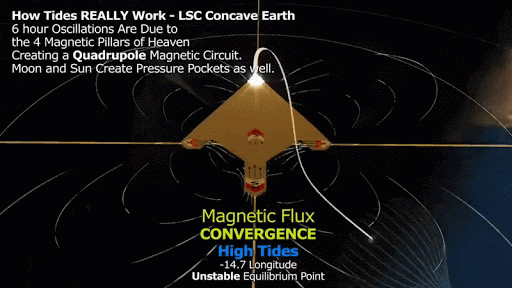

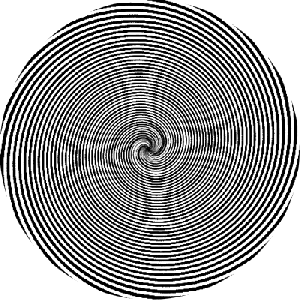
Uploading: Cpp5QY9W8AAI_Hb.jpg…

